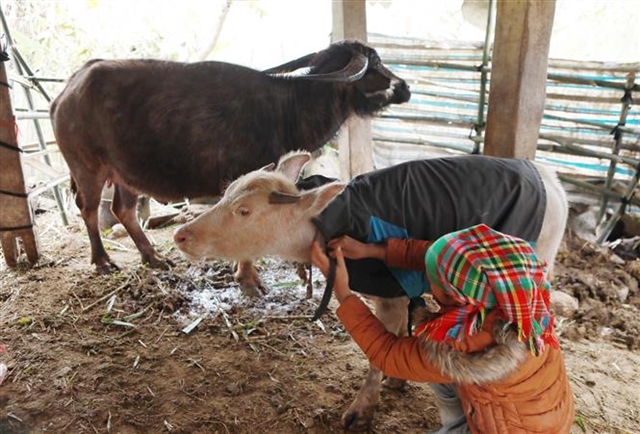 Life & Style
Life & Style

A new report concludes that Krông Nô-Đăk Nông volcanic park meets the UNESCO criteria for a global geopark.
 |
| Scientists examine a cave at Krông Nô volcanic geopark. — Photo baomoi.com |
HÀ NỘI — A new report concludes that Krông Nô-Đăk Nông volcanic park meets the UNESCO criteria for a global geopark.
The park, located in the central highland province of Đăk Nông, also contains a system of caves and many archaeological sites that could prove useful in recreating the lives of Việt Nam’s ancient inhabitants.
The report was presented this week in Gia Nghĩa Commune, also in Đắk Nông Province. Experts from the Việt Nam Nature Museum, the Việt Nam Science and Technology Institute and the province’s Science and Technology Department gathered for the announcement.
It took dozens of years of research, including three years of this most recent project, for 62 scientists from Việt Nam and Japan to conclude the geopark meets the UNESCO (United Nations Educational, Scientific and Cultural Organisation) criteria for recognition as a geographical and non-geographical heritage site.
The requirements state a global geopark should have at least 40 geographical heritage areas, at least one of which must be recognised as international level.
Of the site’s 55 geographical heritage areas, seven reach this exalted designation.
The system of volcanic caves is unique in the region and rare in the world, researchers noted.
They also said that, beyond the geographical heritage sites, the cultural heritage and biological diversity of the area exceed UNESCO guidelines.
At the presentation, head researcher La Thế Phúc said a prehistoric corpse of a four-year-old boy was unearthed over one metre below the floor of a cave. The remains were brought to Hà Nội in April 2018.
The discovery promises to help unlock the secrets of prehistoric life in the central highlands.
Researcher Lê Xuân Hưng of Đà Lạt University was among the group of scientists that unearthed the corpse. He told Tiền Phong (Vanguard) newspaper this is the first time Vietnamese archaeologists have discovered traces of prehistoric human life protected by sediment and other volcanic matter in the caves.
“From this discovery, we can begin to understand 10,000 years of history, stretching back to the Metal Age,” he said. “We can recreate records of plants and animals based on unearthed objects such as animal bones, snail and tortoise shells and preserved flower pollen.”
At the workshop, Trương Thanh Tùng, deputy chairman of the province People’s Committee, thanked the researchers for their careful work in supporting the local authorities’ efforts to analyse the site.
The province will submit the completed report to UNESCO and request the organisation designate the site a global geopark, with the hope that its recognition will promote cultural tourism that could improve the province’s economy. — VNS




